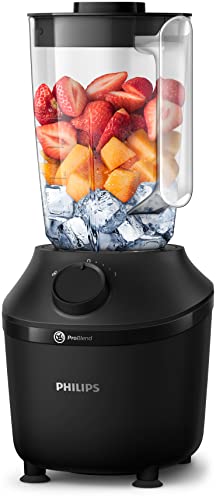Yes, a blender can puree vegetables
A blender is an essential kitchen tool that can be used for a variety of purposes, including pureeing vegetables. Whether you want to make a smooth and creamy soup, a flavorful sauce, or a nutritious smoothie, a blender can help you achieve a smooth and uniform texture.
The benefits of pureeing vegetables
Pureeing vegetables is a great way to incorporate more nutrients into your diet. When vegetables are pureed, they are easier to digest, which can be especially beneficial for individuals with digestive issues or those who have difficulty chewing. Pureed vegetables can also be used as a base for various recipes, providing a naturally thick and creamy texture.
How to puree vegetables in a blender
Pureeing vegetables in a blender is a simple and straightforward process. Here’s how you can do it:
1. Choose your vegetables: Select the vegetables you want to puree. You can use a single vegetable or a combination of different vegetables for added flavor.
2. Prep the vegetables: Wash the vegetables thoroughly and remove any dirt or debris. Peel and chop the vegetables into smaller pieces to ensure even blending.
3. Add the vegetables to the blender: Place the chopped vegetables into the blender jar.
4. Blend on high speed: Start by pulsing the blender a few times to break down the vegetables. Then, blend on high speed until the vegetables are smooth and well pureed. You may need to stop and scrape down the sides of the blender jar to ensure everything blends evenly.
5. Adjust the consistency: If the puree is too thick, you can thin it out by adding a small amount of liquid, such as water, vegetable broth, or milk. Blend again until the desired consistency is reached.
Tips for pureeing vegetables in a blender
To achieve the best results when pureeing vegetables in a blender, here are a few helpful tips:
1. Use a high-powered blender: A high-powered blender is more efficient at breaking down the vegetables, resulting in a smoother puree. If you have a basic blender, you may need to blend the vegetables for a longer period of time.
2. Cut the vegetables into small pieces: Smaller pieces of vegetables will blend more easily and evenly.
3. Start with a small amount of liquid: When blending, start with a small amount of liquid and add more as needed to achieve the desired consistency. Adding too much liquid at once can make the puree too thin.
4. Blend in batches if needed: If you are making a large quantity of pureed vegetables, you may need to blend them in batches to ensure proper blending.
5. Season to taste: After pureeing the vegetables, taste the puree and add seasonings, such as salt, pepper, herbs, or spices, to enhance the flavor.
Other uses for a blender in the kitchen
While pureeing vegetables is one of the main uses for a blender, it can also be used for various other culinary tasks. Here are a few examples:
1. Making smoothies: Blenders are perfect for making smoothies by blending fruits, vegetables, yogurt, and other ingredients together.
2. Creating sauces and dressings: Blenders can be used to create smooth and creamy sauces and dressings by blending ingredients like tomatoes, garlic, herbs, and oils.
3. Making nut butter: Blenders can be used to make homemade nut butter by blending roasted nuts until creamy.
4. Grinding spices: Blenders with a grinding attachment can be used to grind whole spices into fine powders.
5. Crushing ice: Some blenders are powerful enough to crush ice, making them suitable for creating delicious frozen drinks and desserts.
In conclusion, a blender is a versatile kitchen appliance that can puree vegetables, providing a smooth and uniform texture. Pureeing vegetables can offer various health benefits and can be easily done by following a few simple steps. Additionally, blenders can be used for a wide range of other kitchen tasks, making them an essential tool for any home cook.



![Breville Blend Active Personal Blender & Smoothie Maker | 350W | 2 Portable Blend Active Bottles (600ml) | Leak Proof Lids | White & Pink [VBL248]](https://m.media-amazon.com/images/I/41DZiJdllQL.jpg)


